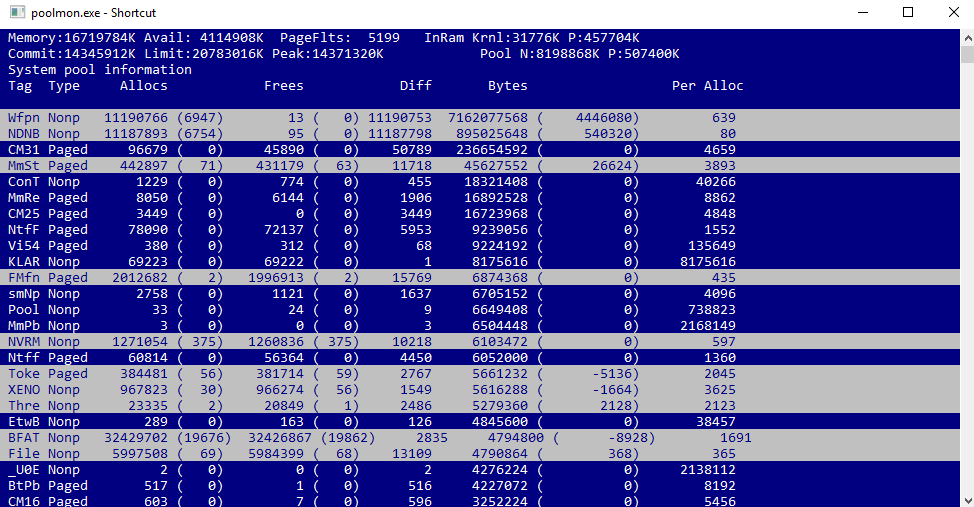

- HOW TO USE POOLMON.EXE WINDOWS 10 HOW TO
- HOW TO USE POOLMON.EXE WINDOWS 10 INSTALL
- HOW TO USE POOLMON.EXE WINDOWS 10 DRIVERS
I was able to regain the memory by removing Razer Cortex and the network drivers.Īnother system I could not find the issue, I started to upgrade to different versions from 1903.
HOW TO USE POOLMON.EXE WINDOWS 10 DRIVERS
I started by using Diagnostic startup.which load basic Windows drivers and services without any third-party apps. The latest system I encounter with a memory leak issue was caused by Razer Cortex and the Killer network drivers, which were eating 7GB of RAM. Digging layers upon layers until the culprit is found is required. I have seen your issue many times and it will be hard to find and fix, since the program or driver that is causing it is not shown with any of these tools. You could sort by just clicking the column header. See how the Non-Paged pool section going. Note: Here I have set it to 30000KB as I have 16GB RAM installed, you can put a lower value depending on your system RAM configuration. Click the Leak tab, and set as given below. Just right-click over any of the columns name, choose Select columns and place a check on both Paged pool and NP pool columns.then click OK Now right click on notmyfault64.exe and RUN as an Administrator, you will see following windows. Under the Details tab, you could add the Paged pool and NP pool columns. You could end the process that it is taking the RAM in Task Manager, to provide temporary relief. this will fix certain malware related problems. Often it is good to run cmd.exe as an admin then runningĭISM.exe /Online /Cleanup-Image /Restorehealthīefore looking for other problems. ie 3rd party drivers making calls that cause the windows driver to eat up all of the pool memory. if it is a windows driver you might have to figure out what it is doing to see what is messed up. So you would scan for a 3 char string in that case.Īfter you find the pooltag, then find the driver name you need to google to find out what the driver does and look for a update. The tags should be 4 characters long but I just looked at mine and see a 3rd party driver that used a trailing space. Of using the findstr command to find a driver tag by looking for the tag string inside of files in your driver directory Here is a good example: An Introduction to Pool Tags - Microsoft Tech Community
HOW TO USE POOLMON.EXE WINDOWS 10 HOW TO
Google how to find out what driver is using a pooltag If it is a 3rd party driver then it might not be named and you have to search your drivers files to figure out what driver binary is using the tag. You should sort by non paged pool (or sort by KBytes largest numbers first)įind the tag name and look at the source and description field to see what it is.
HOW TO USE POOLMON.EXE WINDOWS 10 INSTALL
This is often hard to find and install so you might want to use this tool poolmonx To do this you need to run poolmon.exe from the windows ddk. You need to find the pooltag for the driver that is using excessive pool.


 0 kommentar(er)
0 kommentar(er)
